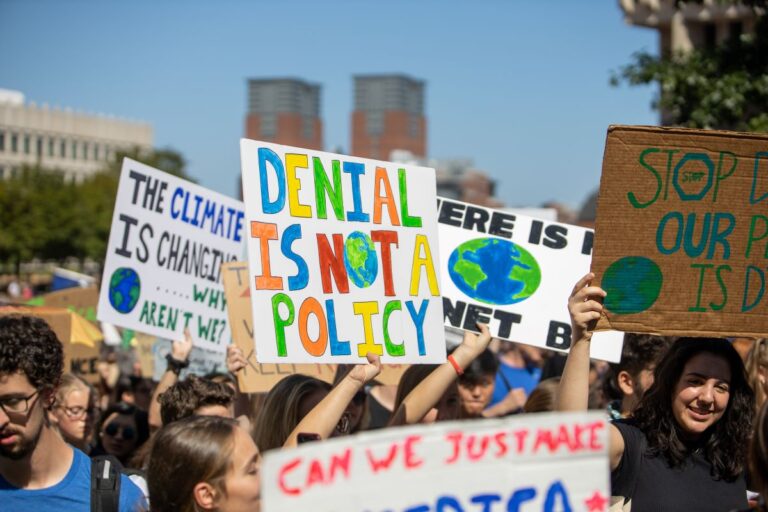Can Green Energy Handle the Heat of Peak Demand?
As we move towards a greener future, renewable energy sources like wind and solar are becoming more prevalent. But can they handle the peak demand traditionally met by fossil fuels?
Intermittency Issues

One of the biggest challenges with renewable energy is its intermittent nature. Solar power depends on sunlight, and wind power relies on wind speeds, both of which can be unpredictable. This variability makes it challenging to ensure a steady supply during peak demand.
Storage Solutions

Advancements in battery storage technology are crucial for addressing intermittency. By storing excess energy generated during peak production times, batteries can help meet demand when renewable sources aren’t producing.
However, the current storage capacity needs to be scaled up significantly to make a substantial impact.
Grid Modernization

Integrating renewable energy into the grid requires modernization. Smart grids, which use digital technology to manage electricity flow more efficiently, are essential for balancing supply and demand in real time.
Diversification

A diversified energy portfolio that includes various renewable sources can mitigate the risks associated with intermittency.
Combining solar, wind, hydro, and geothermal energy can provide a more stable and reliable supply.
Policy Support

Government policies play a crucial role in promoting renewable energy. Incentives for renewable energy projects, research funding, and supportive regulations can accelerate the transition to a greener grid.
Economic Considerations

The cost of renewable energy has decreased significantly over the past decade, making it more competitive with fossil fuels.
Continued investment in renewable technology can further reduce costs and make green energy more accessible.
Environmental Benefits

Renewable energy sources produce little to no greenhouse gas emissions, making them essential for combating climate change. The environmental benefits of reducing reliance on fossil fuels are immense.
Community Involvement

Local communities can play a role in the renewable energy transition. Community-owned renewable projects, such as solar farms and wind turbines, empower residents and provide local economic benefits.
Technological Innovations

Ongoing innovations in renewable technology are enhancing efficiency and expanding capabilities.
Advanced wind turbines, more efficient solar panels, and improved geothermal technologies are making renewables more viable for meeting peak demand.
International Cooperation

Global cooperation is essential for advancing renewable energy. Countries can share technologies, best practices, and resources to enhance renewable energy adoption worldwide.
Corporate Responsibility

Businesses are increasingly recognizing the importance of renewable energy. Many companies are investing in renewable projects and setting ambitious targets for reducing their carbon footprints.
Consumer Behavior

Consumers can support the transition to renewable energy by adopting energy-efficient practices and supporting policies that promote green energy.
Simple actions, like using energy-efficient appliances and reducing energy consumption during peak times, can make a difference.
Educational Initiatives

Educating the public about the benefits and challenges of renewable energy is crucial. Awareness campaigns can help garner support for renewable projects and encourage sustainable practices.
Economic Growth

The renewable energy sector is a significant driver of economic growth. Investments in renewable projects create jobs, stimulate local economies, and foster technological innovation.
Resilience and Security

Renewable energy can enhance energy security and resilience. By reducing dependence on imported fuels and diversifying energy sources, renewables can make energy systems more robust against disruptions.
Future Outlook

While challenges remain, the future of energy is undoubtedly green. With continued investment, innovation, and public support, renewable energy sources can meet peak demand and drive a sustainable energy future.
Call to Action

As we strive for a greener future, it’s essential to support policies and initiatives that promote renewable energy. By working together, we can ensure a reliable, sustainable, and resilient energy system for generations to come.
Millennials Turn the Tide on Climate Beliefs

Millennials have often been labeled as apathetic, but when it comes to climate change, they are leading the charge. How did this generation go from skepticism to becoming fervent advocates for the planet? Millennials Turn the Tide on Climate Beliefs
Forgotten Warriors: 20 Military Units History Erased

Throughout American military history, numerous units have demonstrated extraordinary bravery and made significant sacrifices, yet many have not received the recognition they deserve. This article shines a light on these overlooked groups whose valiant efforts are an integral part of our nation’s heritage. Forgotten Warriors: 20 Military Units History Erased
Why You Shouldn’t Live in a Retirement Community

Think you’re ready to settle into a retirement community? Before making this significant life decision, consider how it might impact your independence, finances, and social life in ways you hadn’t anticipated. Why You Shouldn’t Live in a Retirement Community
Featured Image Credit: Shutterstock / Budimir Jevtic.
The content of this article is for informational purposes only and does not constitute or replace professional advice.
The images used are for illustrative purposes only and may not represent the actual people or places mentioned in the article.
For transparency, this content was partly developed with AI assistance and carefully curated by an experienced editor to be informative and ensure accuracy.






